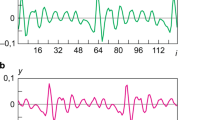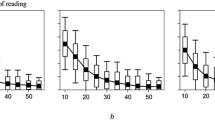We consider the problem of determination of the intelligibility of speech of a speaker according to a finite fragment of the speech signal. It is shown that the main difficulties in the solution of this problem are connected with the necessity of analysis of small samples. To overcome the problem of small samples, we proposed a new high-speed method for measuring the intelligibility of speech signals on the sonic level of its perception. The proposed method is based on the information indicator of speech intelligibility in the Kullback-Leibler metric. We consider an example of practical realization of the new method with the use of a self-regression model of minimum sound units from the speech flow of a speaker. The characteristics of efficiency of the new method are analyzed. It is shown that, under certain conditions, the application of the information indicator enables us to realize the general systems principle of guaranteed result. On the basis of the software developed by the authors, we designed and performed full-scale experiments and established quantitative estimates for the speed of this method. It is shown that, with the help of this method, quite accurate and reliable estimates of the information indicator are obtained for short (2–3 min) segments of speech signals. The accumulated results and the conclusions made on their basis are intended for applications in the development of new systems and improvement of the existing systems of automatic speech processing and recognition intended for the operation in the real-time mode.



Similar content being viewed by others
References
V. V. Savchenko, “A method of measuring the index of acoustic voice quality based on an information-theoretic approach,”Izmer. Tekhn., No. 1, 60–64 (2018), DOI: https://doi.org/10.35446/0368-1025it.2018-1-60-64.
V. V. Savchenko, “Itakura–Saito divergence as an element of the information theory of speech perception,” J. Comm.Technol. Electron., 64, No. 6, 590–596 (2019), DOI: https://doi.org/10.1134/S1064226919060093.
K. Wang, P. Wang, and X. Qiu, “Increasing speech intelligibility in monaural hearing by adding noise at the otherear,” Appl. Acoust., 146, 50–55 (2019), DOI: https://doi.org/10.1016/j.apacoust.2018.10.035.
E. Hossain, M. Zilany, and E. Davies-Venn, “On the feasibility of using a bispectral measure as a nonintrusive predictorof speech intelligibility,” Comput. Speech Lang., 57, 59–80 (2019), DOI: https://doi.org/10.1016/j.csl.2019.02.003
T. A. Margaryan and O. A. Voinov, “Analysis of methods aimed at the evaluation of speech intelligibility,” in: Microelectronics and Informatics, S. A. Gavrilov (ed.), NIU MIET, Moscow (2018), pp. 143–148.
E. V. Shatalov, S. V. Popov, and N. A. Dubovitskii, “Method for evaluating the clarity of speech received through the channel of intercommunication devices of self-contained respirators,” Izmer. Tekhn., No. 6, 61–63 (2004).
D. P. Linde (ed.), Handbook on Radioelectronic Devices, Energiya, Moscow (1978), Vol. 2.
V. V. Savchenko and A. V. Savchenko, “Criterion of significance level for the selection of the order of spectral estimation of entropy maximum,” Radioelectron. Communic. Syst., 62, No. 5, 223–231 (2019), DOI: 10.3103%2FS073 5272719050042.
P. A. Kir’yanov and A. Sh. Kaganov, “Evaluation of the stability of formant ratios in the spectral analysis of speechsignals,” Sudebn. Med., 4, No. S1, 152–153 (2018), DOI: https://doi.org/10.19048/2411-8729-2018-4-1s.
A. A. Borovkov, Mathematical Statistics, Lan’, St. Petersburg (2010).
А. V. Savchenko and V. V. Savchenko, “A method for measuring the pitch frequency of speech signals for the systems of acoustic speech analysis,” Izmer. Tekhn., No. 3, 59–63 (2019), DOI: https://doi.org/10.32446/0368-1025it.2019-3-59-63.
A. A. Konev, R. V. Meshcheryakov, and I. A. Khodashinskii, “Recognition of vowel sounds according to the information about the first and second harmonics,” in: Analysis of Spoken Russian: 6th Interdiscipl. Workshop, SPbGU, St. Petersburg (2012).
V. V. Savchenko, “Solution of the problem of multiple comparisons encountered in the problems of automatic signal recognition at the output of the voice communication channel,” Elektrosvyaz, No. 12, 22–27 (2017).
S. L. Marple, Digital Spectral Analysis, Prentice Hall, Englewood Cliffs, NJ (1987).
Voice Self-Analysis Software Package, https://sites.google.com/site/frompldcreators/VSAUserGuideV1.pdf, acc.04.19.2018.
Author information
Authors and Affiliations
Corresponding author
Additional information
Translated from Izmeritel’naya Tekhnika, No. 9, pp. 59–64, September, 2019.
Rights and permissions
About this article
Cite this article
Savchenko, V.V., Savchenko, L.V. Method for Measuring the Intelligibility of Speech Signals in the Kullback–Leibler Information Metric. Meas Tech 62, 832–839 (2019). https://doi.org/10.1007/s11018-019-01702-1
Received:
Accepted:
Published:
Issue Date:
DOI: https://doi.org/10.1007/s11018-019-01702-1




